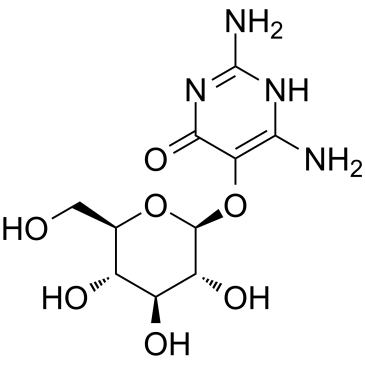Hydrolysis of vicine and convicine from fababeans by microbial beta-glucosidase enzymes.
A M McKay
Index: J. Appl. Bacteriol. 72(6) , 475-8, (1992)
Full Text: HTML
Abstract
The toxic glycosides vicine and convicine which are present in fababeans have been implicated in favism, an anaemic disease of humans. Vicine and convicine concentrations are reduced by growth of Lactobacillus plantarum on fababean suspensions. The glycosides are eliminated from the fababean substrate by the growth of the filamentous fungus Fusarium graminearum. Incubation of fababean suspension with concentrated culture filtrate of Aspergillus oryzae, induced for extracellular beta-glucosidase production, results in complete degradation of the glycosides. This study suggests a potential use of micro-organisms or microbial enzymes for detoxification of fababeans.
Related Compounds
| Structure | Name/CAS No. | Molecular Formula | Articles |
|---|---|---|---|
 |
Vicine
CAS:152-93-2 |
C10H16N4O7 |
|
Effect of air classification and fermentation by Lactobacill...
2015-01-16 [Int. J. Food Microbiol. 193 , 34-42, (2015)] |
|
Vicianin, prunasin, and beta-cyanoalanine in common vetch se...
2001-10-01 [J. Agric. Food Chem. 49(10) , 5075-80, (2001)] |
|
Biocatalytic production of alpha-hydroxy ketones and vicinal...
2013-02-25 [Chem. Biol. Interact. 202(1-3) , 195-203, (2013)] |
|
New evidence for the mechanism of the tin(II) chloride catal...
2001-04-12 [Carbohydr. Res. 331(3) , 239-45, (2001)] |
|
Vicine and convicine in common vetch (Vicia sativa) seeds en...
2002-01-01 [Int. J. Toxicol. 21(3) , 201-9, (2002)] |